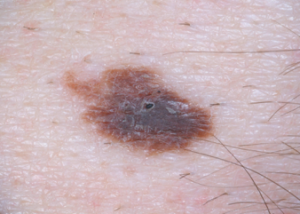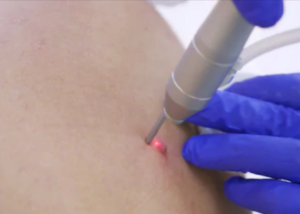
What does a dermatologist think about a punch biopsy for a mole that’s slightly atypical?
An “atypical” mole means it’s more likely to morph into melanoma than is a typical mole.
“A suspicious mole can be biopsied (sampled) in a variety of ways: a punch biopsy, shave biopsy or excision,” says Dr. Rebecca Tung, MD, a
“After the skin is numbed with local anesthetic, the lesion in question can be removed with a circular scalpel (punch biopsy) and closed with a stitch or two.
“If the mole seems more superficial, a special scalpel called a dermablade can be used to remove the mole.
“Alternatively, if a deeper biopsy is needed or the doctor wants to remove the lesion entirely, an excision (removal with a scalpel needing stitches) may be suggested.
“Regardless of how the biopsy is performed, the intent is to make sure the spot is not skin cancer.”
Make an appointment with a dermatologist to have a full skin exam. Ask the doctor to point out any moles that appear to be atypical.
Keep a close eye on them as well as for any new or changing spots on your skin.
Dr. Tung’s specialties include general dermatology with skin cancer surveillance, moles, melanoma, surgery (Mohs micrographic, laser, skin cancer reconstruction) and cosmetic dermatology.
specialties include general dermatology with skin cancer surveillance, moles, melanoma, surgery (Mohs micrographic, laser, skin cancer reconstruction) and cosmetic dermatology.
 Lorra Garrick has been covering medical, fitness and cybersecurity topics for many years, having written thousands of articles for print magazines and websites, including as a ghostwriter. She’s also a former ACE-certified personal trainer.
Lorra Garrick has been covering medical, fitness and cybersecurity topics for many years, having written thousands of articles for print magazines and websites, including as a ghostwriter. She’s also a former ACE-certified personal trainer.


























